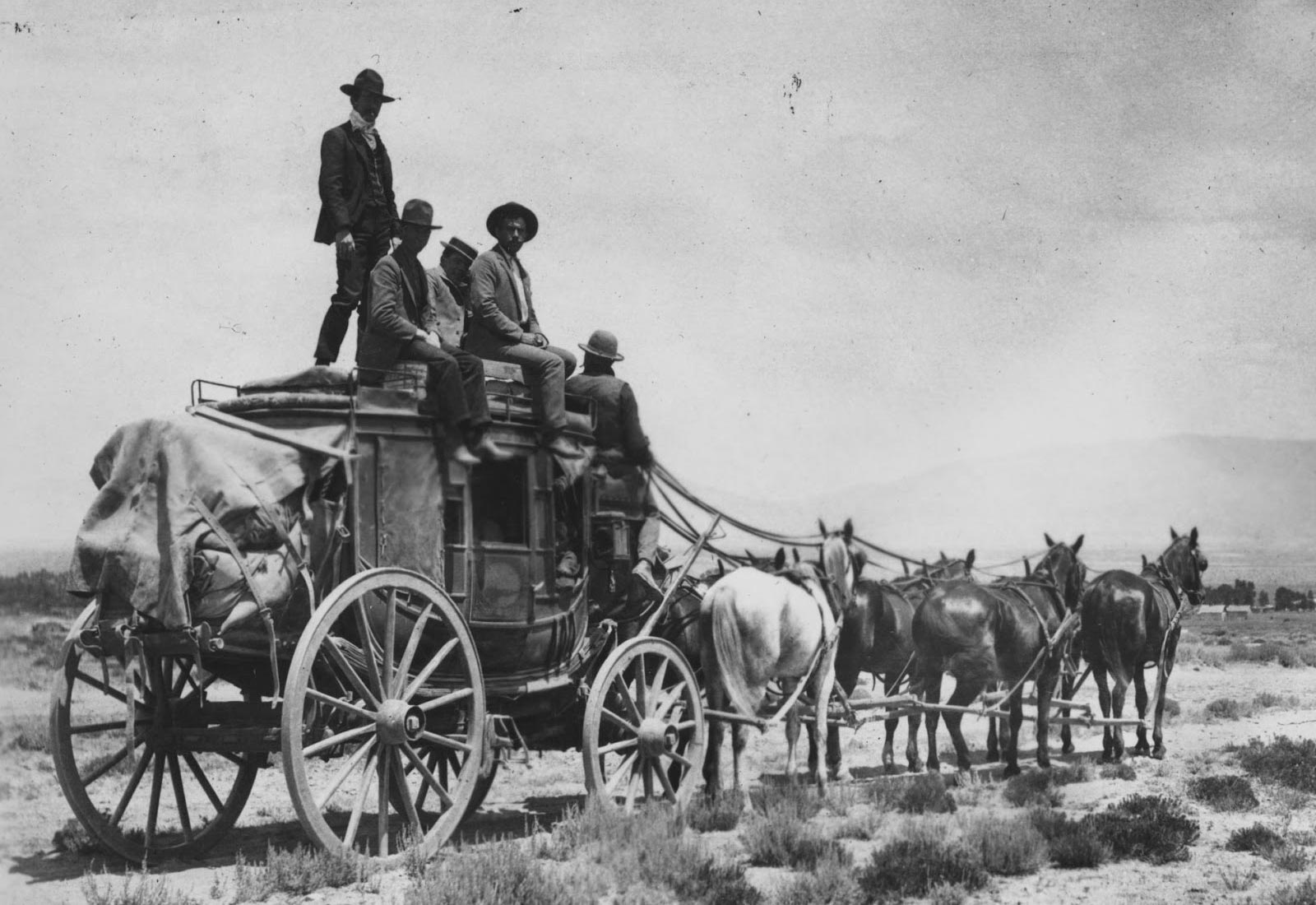Prescott History
The Beginning – 1863
Captain Joseph R. Walker led an expedition that discovered gold in 1863 near the headwaters of the Hassayampa River. A gold rush followed.
I previously made a video about the Birthplace of Prescott.
Prescott was founded in 1864 as the Territorial Capital of Arizona.
President Lincoln signed the bill that created the Arizona Territory in 1863. This was the middle of the Civil War, so any western resources could help secure a Union victory.
The first presidential appointee as territorial governor of Arizona, John Gurley of Ohio, died in August of 1863, before the delegation left for the west.
John Goodwin of Maine succeeded Gurley, traveling by train, riverboat and then by horseback over the Santa Fe Trail. On December 29, 1863, Richard McCormick of New York, the Secretary to the Territory, raised the U.S. flag and administered the oath of office to Governor Goodwin.
Prescott was also designated as the County Seat of Yavapai County, one of four original territorial counties.
Although the Capital moved to Tucson from 1867 to 1877, the Capital returned to Prescott at the end of 1877 and remained until it was moved permanently to Phoenix in 1889.
During the fall of 1864, construction was being completed on many buildings of Fort Whipple, and on the Territorial Governor’s Mansion.
The territorial government and the new residents of Prescott were also driving from the land the actual native people, the Yavapai. Settlers, miners and ranchers all complained about the “Indian troubles.” The perspective that the Yavapai might be having “Euro-American troubles” was equally valid.
Cowboys – 1870s
The gold mining in the nearby Bradshaw Mountains supported the local economy as well as the Civil War. Prescott grew in economic and political power.
After the Civil War, the Western Frontier started to boom. The legend of the cowboy was born during this time and Prescott was a part of that.
Prescott in its territorial years was a frontier town and had its share of crime, rowdyism and an occasional gunfight on Whiskey Row.
Virgil Earp was the town constable in Prescott in 1879, and he asked his brother, Wyatt to join him here. Doc Holliday and his common-law wife Big Nose Kate, with their children all came to live in Prescott.
They soon moved to Tombstone, where they became famous in the shoot out near the OK Corral.
Changes – 1880s – 1890s
The decade of the 1880s saw fluctuations in the economic condition of Prescott due to slumps in mining activity. The community was strong enough to recover economically based on the rapid growth of the cattle industry in the area.
On December 31, 1886, the Arizona Central Railway was opened connecting Prescott with the Atlantic and Pacific. In 1893 it was replaced by a branch of the Santa Fe.
July 4, 1888, became the birthday of professional rodeo when a group of Prescott, Arizona, merchants and professional businessmen organized the first formalized “cowboy tournament” and offered cash prizes. The “World’s Oldest Rodeo” was born.
By 1895 the Santa Fe, Prescott and Phoenix Railroad(also known as the “Peavine”) connected Prescott’s mining area with the Southern Pacific line. The access to the railroad bolstered the mercantile sector of the local economy and led to the establishment of several new dry goods and mining supply businesses.
Glory Days – 1890s – 1910s
The period 1890-1920 may have been the most dynamic in Prescott’s history.
The Courthouse Plaza was the busy center of business. Major retail outlets, such as the Bashford-Burmister Company and the mercantile enterprise of the Goldwaters, were going strong.
The first courthouse was settling criminal cases, sometimes with a hanging on the square.
The stretch of Montezuma Street along the western side of Courthouse Plaza was becoming known as Whiskey Row.
Behind Whiskey Row were the Chinese and brothel districts. One two-story bordello was on the site of today’s modern parking garage.
Chinatown was centered along Granite Street, adjacent to Granite Creek.
As many as 500 Chinese immigrants passed through Prescott between 1870 and 1930, many of them returning to China with a hard-earned prosperity from their labors as gardeners, laundry workers and restaurant owners.
By 1900, established residences were clearly reflecting the Victorian era architectural styles: Cottages, Greek Revival, Octagon, Queen Anne, Gothic Revival, Eastlake, Stick, Shingle, Italianate. People were moving across Granite Creek and into areas south and west of town.
The Whiskey Row Fire – 1900
Whiskey Row burned to the ground on July 14, 1900. The fire destroyed four and one-half blocks of downtown Prescott, including twelve hotels and 20 mercantile establishments.
After the fire, citizens soon viewed the event as a chance to replace the old wooden buildings common in the downtown area with more permanent concrete, brick and stone buildings.
The Fire of 1900 not only brought on a new era in architecture, but it also seemed to stimulate a variety of social and public improvements.
Downtown, cement sidewalks and paved streets replaced the dusty thoroughfares of the 1800s.
The Elks Opera House was built in 1905 and is still in operation.
The Hassayampa Inn opened for business in 1927.
Sharlot M. Hall opened her museum in the Territorial Governor’s Mansion in 1928.
One famous gambler, Sheriff William “Buckey” O’Neill, did not witness the fire; he had been dead for two years, one of the Rough Rider casualties in Cuba.
Prescott Grows Up – 1910s
Prescott changed from a mining frontier town into a genuine nice place to visit, so Prescott, along with Arizona in general, was experiencing an increase in tourism.
The Yavapai Chamber of Commerce (now the Prescott Chamber of Commerce) was founded in 1914 to promote Yavapai County and especially the Prescott area for its healthful climate.
Summer, in particular, was a busy time of the year for Prescott. Many families from Phoenix would stay in summer homes in or around Prescott, or “camp out” in tents, or sometimes, in elaborate portable houses.
The Copper Mining Industry also supported area growth in the early 20th Century because of the extra demands for World War I.
Depression – 1920s – 1940s
However, by 1919 Prescott suffered the effects of postwar depression along with the rest of the state and nation.
However, local and federal assistance programs (the PWA, CCC, WPA) were well organized in Prescott during the late 1930s.
Many local unemployed found work with the WPA in Prescott without having to leave their families.
There was a definite slump in the tourism industry and almost no growth or expansion between 1932 and 1935.
There was very little building during World War II.
Today’s Growth – 1946 – Today
However, starting in 1946, there was a significant increase in both residential and commercial building reflecting the nationwide boom in growth and home ownership for the middle class.
In 1950, there were less than 7,000 people living in Prescott.
Prescott grew along with the exuberant post war boom. By 1960, the population had almost doubled to just under 13,000 people.
Prescott’s significant growth started in the 1970s. Since the 1980 census, the population has at least doubled.
Go read the Prescott Population page for details about the growth curve.
More Information
This is a quick timeline. The history of Prescott is so deep that it would take books to tell all of the stories.
Sharlot Hall Museum is the best place to find detailed information about the history of Prescott. It is located downtown, one block west of the Courthouse Square on Gurely St.
The museum maintains an archive of original historical artifacts that is available to the public. It’s an amazing place to spend time and ask questions.
Here are some places online for you to explore.
Chamber of Commerce: prescott.org
Prescott City: prescott-az.gov
World’s Oldest Rodeo: worldsoldestrodeo.com
Prescott History Blog, constantly updated: prescottazhistory.blogspot.com




